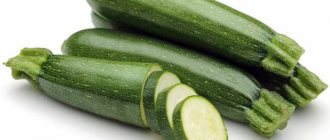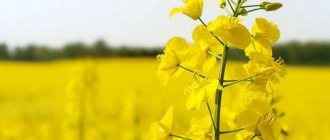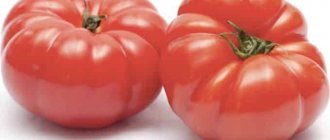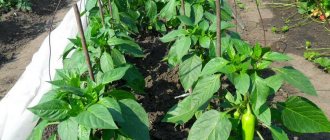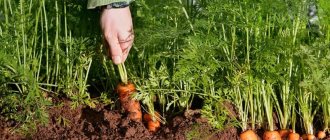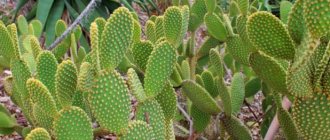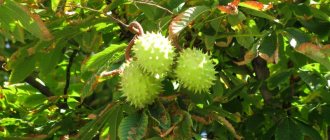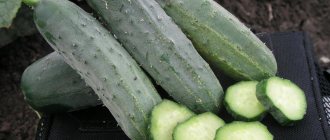There are many wild and cultivated plants in nature. Most of them people have never seen in their lives. Rapeseed can easily be considered such crops.
But many people know rapeseed, the closest relative of this plant. Everyone knows what the fields look like with it. This is a solid yellow carpet on meadows and fields. This crop is characterized by the same flowering. So, what is rapeseed?
Botanical characteristics of rapeseed
Rapeseed is a herbaceous annual plant. This is a unique crop that does not have a wild ancestor. Researchers became interested, what is rapeseed? They carried out genetic research several times. They showed that rapeseed is a hybrid containing diploid, complete sets of chromosomes of the parent specimens (rape, cabbage). There are two forms: winter and spring. The root system of the plant is very developed. In spring rape it penetrates into the soil by 2 m, and in winter rape by 3 m. Having reached 40 cm in length, the tap root begins to branch, gradually growing in the horizontal direction. Rapeseed is a tall plant. It can reach 1-2 m in height. Stems are straight, round in shape. They reach a diameter of 3 cm. They have a bluish or green color and are covered with a waxy coating on top. Rapeseed can be distinguished from other brothers of the cabbage family by photo due to the shape of the leaves. How? On the stems there are 3 types of leaves with a waxy coating. Color green-blue or purple. Today there are several types of rapeseed. Plants with a minimum number of leaves, as well as with a large number of them, are popular.
All flowers are collected in corymbs, yellow in color. The fruit is a pod reaching 12 cm in length. Inside there is a membranous septum that separates about 30 small spherical seeds from each other. The planting material is dark in color. The seeds of the plant are so small that 1000 peas of spring rapeseed weigh only 5 grams, and the same amount of winter rapeseed seeds does not exceed 7 grams.
The plant is propagated by seed. Planting material does not lose its viability for 6 years.
Why is rapeseed a promising crop?
1. Rapeseed improves the soil
Rapeseed has a powerful taproot that goes 1.5-3.0 meters deep and structures the soil well and naturally enriches it with oxygen. In addition, rapeseed saturates the soil with nitrogen and quickly leaves the field, giving the farmer the opportunity to properly prepare the land for new sowing.
– Rapeseed is a good predecessor for winter crops. After it, wheat yield increases by 5-8 c/ha,” says Lyudmila Gorlova.
2. Rapeseed is insurance against spring-summer drought
“This year, despite the drought, we received more than 33 c/ha,” Nikolai Rudenko shared. – Rapeseed yielded more than winter wheat because it took water from deeper soil horizons.
“This year, judging by the farms I saw, everyone’s rapeseed harvest was great,” confirms Sergei Stadnikov.
3. Rapeseed allows you to receive revenue already at the beginning of harvesting
There are no difficulties with the sale of rapeseed: this is the first oilseed crop that appears when processing... The seeds disperse instantly.
“Rapeseed yields quick money, and that’s why it’s profitable,” says Sergei Stadnikov. – In July, the price was around 18.5-22 rubles. Considering that the costs are small, I think rapeseed will surpass sugar beets in terms of profitability.
– Rapeseed is one of the most profitable crops. This year it cost 18-20 rubles. The price for seeds is usually slightly lower than for sunflower, but sunflower has more restrictions on sowing, says Nikolai Len.
4. Rapeseed is in demand abroad and in Russia
Rapeseed oil, despite the fact that its fatty acid composition is close to olive oil and is healthier for humans than sunflower oil, is not yet in demand among Russian consumers. But rapeseed oil is in high demand abroad.
An indicative example is this: a rapeseed processing plant will be put into operation near Tomsk this year. The investor, Group, has already stated that 21 thousand tons of oil that the plant will receive will be exported to the markets of China and Eastern Europe. Inside the country, rapeseed cake will remain, which is known to livestock farmers as a good stimulator of lactation in cattle.
According to the Rosselkhozcenter, over the eight months of the 2017-2018 agricultural year, exports of rapeseed increased fourfold and amounted to 234 thousand tons. And since the beginning of the new agricultural year, in just three weeks, 24 thousand tons of rapeseed were exported abroad. Among the dozens of major export crops, rapeseed took seventh place after wheat, barley, corn, wheat bran, peas and soybeans.
Why and how rapeseed is grown
What is rapeseed and where is it used? This culture is actively used in the national economy for:
- production of technical oil and biofuel;
- production of cosmetics and detergents;
- preparation of green feed for animals;
- obtaining edible vegetable oil;
- production of compound feed base.
This crop is actively grown in China and Canada. The popularity of rapeseed is obvious. Indeed, today special attention is paid to the production of biofuel, which can be obtained from the seeds of this crop. To do this, you just need to add cheap ingredients to rapeseed oil: caustic soda, methyl alcohol. This combination will allow you to obtain good, high-quality diesel fuel. Experts say that to obtain 1 ton of fuel you need 1 ton of oil, 10 kg of caustic soda and 100 liters of methyl alcohol. Producing this amount of fuel at a cost is almost 2 times cheaper than diesel fuel, which can be purchased at a gas station. The use of rapeseed oil in food is an open question. There are some nuances to using this product when preparing dishes.
Rapeseed oil as a food product
During the Second World War, at the request of the allied countries, Canada increased the area under rapeseed, from which fuel and lubricants for military equipment were produced.
Technical oils from it “stick” well to metal parts, which reduces the consumption of technical fluids and increases the service life of weapons and equipment. But during the years of peace, Asian rapeseed producers returned to the market, and the demand for rapeseed oil for technical purposes fell. What was suitable for iron machines was not very suitable for people. Attempts to produce food rapeseed oil were unsuccessful. The oil turned out to be green in color, with a bitter aftertaste and not a very good smell. It was steadfastly ignored by buyers. In addition, rapeseed oil had a negative effect on the heart and blood vessels. All undesirable qualities are associated with large amounts of chlorophyll, erucic acid and glycosinolates.
Geneticists faced the difficult task of developing varieties in seeds whose content of these substances would tend to zero. At the same time, fairly high winter hardiness was needed. The result of this work was the registration in Canada of rapeseed oil under the trademark Canadian Oil, Iow Acid, which translated meant Canadian oil with low acidity, abbreviated as canola. An oil that contained no more than two percent erucic acid could be called canola. Currently, debates about the benefits and harms of vegetable oil from this crop for human health continue. It is very often included in margarines and used in the preparation of fast food, semi-finished products, confectionery, chips, popcorn and even baby food. At the same time, labels do not always contain information about the content of rapeseed oil in products, and the name canola is not known to all consumers. Opponents of rapeseed oil as a food product argue that it is impossible to completely remove it from the body; it leaves marks on the heart and blood vessels. Proponents insist that the benefit of canola oil is its high oleic acid content, which makes it similar to olive oil. Today in the consumer market, approximately 14% of all vegetable oils are rapeseed oil, and the choice always remains with the consumer. Video about sowing rapeseed:
Soil preparation and fertilization for rapeseed
Rapeseed grows well on chernozems with a slightly acidic reaction. Before planting, the soil must be thoroughly cleared of weeds. After all, they can inhibit the development of young seedlings. Deep plowing is a must for processing heavy soils. Indeed, thanks to the rotation of a large layer, the dense soil is gradually loosened, small clods are broken, and the soil is saturated with oxygen. This soil preparation has a beneficial effect on the development of the root system. In addition, the soil surface is leveled, and this has a positive effect on the quality of seedlings. This indicator is especially important for planting winter rapeseed. The soil should have small lumps. This can be achieved by cultivating the land after deep plowing with a cultivator to the depth of sowing seeds.
Agronomists claim that rapeseed absorbs about 30% of its nutrients from the soil. Therefore, care should be taken to apply organic and mineral fertilizers. It's important to know the time. It is better that organic fertilizers are applied in advance - under the previous crop.
Nitrogen, phosphorus, and potassium should be added to the soil in a timely manner. Each element is important to the culture. Nitrogen fertilizers promote the high-quality development of seedlings, phosphorus - the development of the root system and the establishment of rosettes, potassium - increases resistance to cold, improves synthesis in plant tissues.
The best varieties of winter rapeseed
Breeding work with this crop is, of course, quite serious. A wide variety of winter rapeseed varieties can be grown in the fields. Most of them are characterized by high productivity. But the most popular varieties of this crop among farmers are:
- "Atlant". This variety is excellent for growing in almost any region of Russia. Its advantages include high yield and abundant branching.
- "Freezing". This variety of rapeseed is usually grown in regions with cold climates, for example, in Siberia and the Urals. In addition to frost resistance, its advantages include a high degree of resistance to disease and frost.
Seed preparation
After harvesting, rapeseed seeds do not require special processing or preparation for sowing. It is necessary to clean and dry the crop. Be sure to etch the material with Royalflo 14 days before sowing. For 1 ton it is necessary to use 30 liters of liquid.
Before planting, rapeseed seeds must meet the following characteristics:
- humidity up to 12%;
- weight of 1000 seeds – 3-7 g;
- germination rate – 96%;
- purity – 97%.
When growing rapeseed, you should remember that this plant is prone to the development of diseases and pest attacks. It is especially vulnerable in the early stages of development. Therefore, before planting, be sure to treat the seeds with insecticides and fungicides. But that's not all. Additionally, the seeds are treated with agents that protect rapeseed from diseases.
After preparing the soil and successful planting, the crop needs careful care. Seedlings should also be fertilized regularly. Important microelements such as magnesium, boron, sulfur, molybdenum, manganese, copper, zinc, cobalt. Why? After all, for example, a lack of boron can cause delayed flowering and thickening of the trunk. And in the absence of sulfur, the pods may not even begin to form. Therefore, all microelements must be added to the soil in the form of fertilizers.
Spring rape
It is sown depending on weather conditions, or more precisely, on soil temperature. At a depth of 2-4 cm, the soil should have a temperature of up to -7 0C. Such conditions help protect plants from attack by pests. In addition, rapeseed can compete with weeds in growth.
Most often, this plant is sown in early spring. There are also certain rules here. The row sowing method assumes a seed planting depth of 2 cm. In this case, the distance between the rows should be about 15 cm. This planting method involves planting 120 seeds per 1 m2.
Is it possible to grow in the country
To obtain oilseeds, rapeseed is, of course, cultivated only on large farms. As a green manure, this crop is also grown on private country plots. The technology for cultivating and harvesting rapeseed in this case is used almost the same as in the fields.
To sow one hundred square meters in suburban areas, about 200 g of seeds are used. If there are animals or poultry on the farm, you can plant rapeseed even thicker. You can sow this crop in the garden from early spring to late autumn - as needed.
For convenience, rapeseed seeds, when planted in a summer cottage, are usually mixed with sand in a ratio of 1:50. Next, the planting material is scattered over the previously dug and leveled area, embedded in the ground with a rake.
The seeds of this crop usually germinate 4-5 days after sowing. Subsequently, growing, rapeseed occupies almost the entire area of the site. This green manure is mowed in the garden, as in the fields, in the flowering phase. The green mass is embedded in the ground with a shovel.
Harvesting
The plant is characterized by uneven flowering, which means that the maturation of some specimens differs from each other. Therefore, during cultivation there is a possibility of losing part of the crop. After all, overripe pods burst and the peas fall out.
Harvesting takes place using a combine. And non-industrial areas can be processed with a flat cutter. Harvesting of winter rapeseed begins when the plants are fully mature. In this case, seed moisture should not exceed 9-12%. A relatively low indicator indicates a significant loss of yield during harvesting.
If there are plants on the site with a strong difference in the ripening period, separate harvesting is used. In this case, the seed moisture should be in the range of 35-45%, and the pods should be yellow-green in color.
Crop care
VNIIMK advises treating seeds with protective compositions with insecticidal and fungicidal action. To control weeds, the institute practices pre-emergence treatment with Butizan.
“Our experience shows that this herbicide fights unwanted vegetation very well,” says Lyudmila Gorlova. – Rapeseed has low growth rates in the very initial period – at this time it is especially vulnerable. Later, the plant opens a rosette of leaves and the weeds become no longer scary to it. In the fall, in the phase of 4-6 true leaves, we treat the crops with the fungicide Folicur. At the end of flowering - Pictor, this is a preventive protection so that the plants do not get sick at the end of ripening. The main diseases of rapeseed appear during the yellow-green pod phase, when action is already useless, so we carry out preventive protection in advance.
Rapeseed has a low growth rate in the very beginning period - at this time it is especially vulnerable. Later, the plant opens a rosette of leaves and the weeds become no longer scary to it.
VNIIMK recommends that pest control be carried out depending on the situation.
“Rapeseed is a succulent plant that is very attractive to pests,” says Sergei Stadnikov. “That’s why we always use the Cruiser insecticide when treating seeds. Often pest invasions occur before flowering. We treat with approved drugs, at night - so as not to harm the bee (rape is an excellent honey plant, produces up to 100 kg of honey per hectare - author). However, there were years when we did not use insecticides at all - the number of insects did not exceed the threshold of harmfulness.
Pest, disease and weed control
Clearing weeds before planting does not guarantee complete protection. After all, their seeds often remain in the ground, which can germinate simultaneously with the crop. To protect against weeds, you should use various drugs: Fusilade, Butizan, Lontrel.
The most dangerous pests for rapeseed are the rapeseed flower beetle and the cruciferous flea beetle. You can protect the plant from their negative influence with the help of special preparations: “Decis”, “Alpha”, “Fastak”.
Fungal diseases have a detrimental effect on the plant during the growth period. Often rapeseed is affected by downy mildew, Alternaria blight, and sclerotinia. You can protect the plant from these diseases with fungicide solutions by spraying the seedlings.
Growing spring form as green manure
In this case, rapeseed is used as a precursor for winter grain crops. Sowing of the spring form when used as green manure is carried out from March to August. This type of rapeseed usually does not grow long in fields before mowing. It is cut off during the flowering period. The technology for cultivating spring rape as green manure, of course, also involves turning over the soil layers after cutting. In order for the green mass in the ground to rot faster, the field must then be additionally watered.
The effect of rapeseed on the soil
Many people believe that cultivating rapeseed has a negative impact on the condition of the soil. But experienced agronomists refute this opinion. Growing this crop, on the contrary, has many advantages:
- reduces the risk of wind and water erosion, thereby improving soil quality;
- reduces weediness of fields;
- quickly clears the ground.
Rapeseed has a positive effect on soil structure. A developed root system loosens well at a certain depth, absorbs the accumulation of nitrates and improves crop rotation. After harvesting winter rapeseed, a lot of organic residue remains in the ground, which fertilizes the soil.
This plant destroys rot in the ground, which negatively affects the development of other plants. In addition, rapeseed is an ideal precursor to cereal crops. Why? This sequence allows you to get a good grain harvest without additional costs.
Now many people know what rapeseed is. Many agronomists say with confidence that this is the plant of the future.
Technology for cultivating winter rapeseed as green manure
Thus, rapeseed is usually sown under various kinds of seedling crops: peppers, tomatoes, cucumbers, zucchini, etc. The exception in this case is cabbage. Winter rapeseed is planted when used as green manure after harvesting the main crops. Usually this is the 2-3rd decade of August.
According to the technology for cultivating winter rapeseed in Belarus, Russia, and Ukraine, the soil for the crop is first loosened with a Fokin flat cutter or cultivator. Mineral and organic fertilizers are also added to the soil. In this case, planting is carried out at the rate of 150-200 grams of seeds per hundred square meters. The seeds are pre-treated and mixed with sand. The planting material is deepened by 2-3 cm. The row spacing is left at approximately 15 cm.
According to the established technologies, rapeseed when cultivated as green manure should be cut with a cultivator about a month before planting the main crops. At the same time, the earth is dug up and the layers are turned over.
